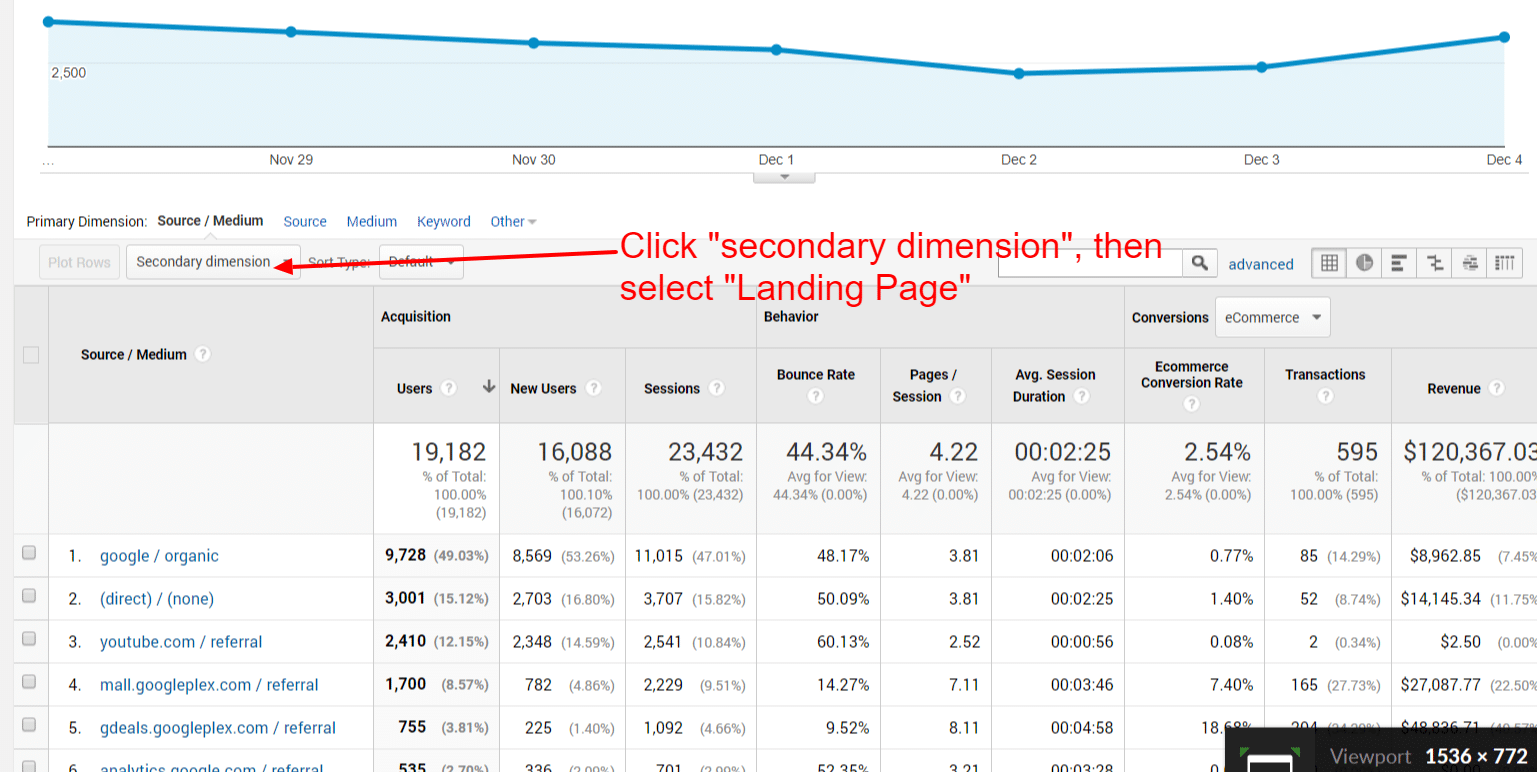Unlock Deeper Insights With Second Measurement in Google Analytics
With the substantial expanse of data offered in Google Analytics, the usage of additional measurements can dramatically improve your analytical capacities. By tactically incorporating secondary measurements into your evaluation, you can unearth important understandings that may otherwise continue to be obscure - Secondary Dimension in Google Analytics.
Understanding Main Vs. Additional Dimensions
When examining data in Google Analytics, it is necessary to identify in between key and second dimensions to acquire deeper insights into customer behavior. Main dimensions are the main classifications whereby you can view your information, such as landing, tool, or source/medium web page. These dimensions provide the fundamental structure for arranging and recognizing your information. On the various other hand, secondary dimensions enable you to further dissect your main dimension information. By including a second dimension, you can layer on additional information to your key measurement, making it possible for a much more granular evaluation. If your primary dimension is the source/medium with which customers arrived on your site, including a secondary measurement like geographical location can disclose where those individuals are located geographically. This included layer of details can help you identify patterns, patterns, or anomalies that may not have been apparent when taking a look at the primary dimension alone. Leveraging both additional and key measurements in Google Analytics is crucial for comprehensive data analysis and informed decision-making.
Using Secondary Measurements Effectively
By including additional dimensions alongside key dimensions, experts and marketing experts can dive much deeper into the specifics of customer interactions on their web sites. Secondary dimensions allow individuals to section and filter main dimension data additionally, providing a more thorough view of user communications, demographics, and actions.
Additionally, secondary measurements enable users to compare and contrast different data factors within a single report, promoting a more extensive evaluation of individual actions patterns. By leveraging additional measurements successfully, businesses can discover surprise insights, enhance their marketing strategies, and improve the overall customer experience on their websites.
Exploring Common Secondary Measurement Mixes
To better analyze individual actions and fads in Google Analytics, it is beneficial to check out typical mixes of secondary dimensions. Some common secondary dimension combinations that supply beneficial understandings include examining web traffic sources with user places to understand where website visitors are coming from geographically and just how they discovered the site. Analyzing customer actions metrics with additional dimensions such as interests or demographics can assist in targeting specific target market segments much more properly.
Applying Second Dimension in Customized Reports
Making use of additional measurements in personalized reports enables a much more comprehensive evaluation of data in Google Analytics, boosting the deepness of insights gotten. When developing custom-made records in Google Analytics, including secondary dimensions can provide a more detailed sight of exactly how numerous dimensions connect with each various other. This attribute enables customers to delve much deeper into their data and uncover important visit homepage correlations that might not be right away obvious.
By using second dimensions in customized reports, customers can gain a far better understanding of their web site or application traffic. Combining the key dimension of "source/medium" with the second measurement of "landing page" can reveal which landing pages are carrying out ideal for website traffic coming from details resources. This insight can assist marketing professionals enhance their projects and boost general conversion rates.

Enhancing Data Visualization With Second Dimension
When discovering information in Google Analytics personalized reports, incorporating additional measurements not only gives an extra detailed evaluation but also enhances the graph of insights with information visualization. By adding a second dimension to your records, you can improve the way information exists, making it simpler to determine patterns, patterns, and relationships within your internet site's efficiency metrics.
Second measurements can help you segment your information additionally, enabling a much deeper understanding of customer habits and interactions on your website. i loved this When trying to isolate particular variables that may influence your site's performance., this enhanced degree of granularity can be particularly beneficial.

Conclusion
In verdict, leveraging secondary dimensions in Google Analytics permits a much more detailed analysis of information, bring about much deeper insights and even more enlightened decision-making. Secondary Dimension in Google Analytics. By adding added layers of details to key data collections, marketers and analysts can reveal hidden patterns, patterns, and correlations that provide a granular view of user behavior and interactions. This enhanced degree of understanding allows optimization of campaigns and customized strategies for details audience sections, inevitably enhancing performance and conversion rates
On the other hand, additional measurements permit you to more dissect your main measurement information. By including a secondary dimension, you can layer on extra info to your main measurement, enabling a much more granular evaluation. If your key measurement is the source/medium with which customers showed up on your site, adding an additional dimension like geographic place can expose where those customers are situated geographically. By incorporating secondary measurements alongside primary dimensions, analysts and marketing experts can delve deeper into the specifics of individual interactions on their web sites. Additional dimensions enable individuals to section and filter main dimension information further, offering a more detailed sight of customer demographics, communications, and visit the site behaviors.
Comments on “Maximize Your Coverage with Secondary Dimension in Google Analytics”